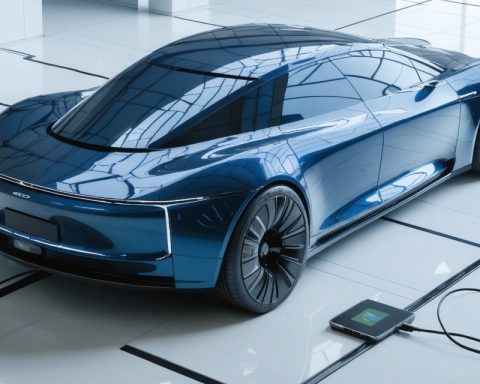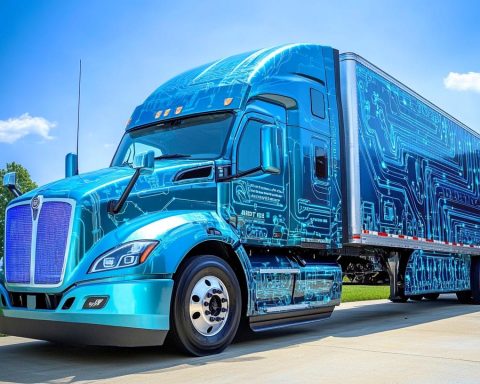- The BV100 battery, from Betavolt, uses Nickel-63 to provide long-lasting power for up to 50 years without recharging.
- This innovative technology offers stable and efficient energy, minimizing radiation risks associated with other nuclear processes.
- Potential applications include medical devices, space missions, and consumer electronics, with significant benefits for each sector.
- Medical devices, like pacemakers, could become more reliable, reducing the need for replacement surgeries and cutting healthcare costs.
- In aerospace, the BV100 could enhance the longevity and reliability of autonomous probes, extending mission durations.
- The use of this battery in smartphones can decrease electronic waste and increase device longevity, addressing planned obsolescence.
- Challenges include regulatory hurdles, environmental concerns about nuclear waste, and production costs.
- China’s development of the BV100 suggests a transformative shift in energy storage, prompting global consideration for responsible adoption.
Amidst the cacophony of charging cables and battery anxieties, a remarkable innovation from China promises to shatter the norms and expectations of energy storage. Enter the BV100 battery, a product of Betavolt—an ambitious leap in technology that harnesses the power of Nickel-63 to defy the limitations of traditional batteries. By drawing from an isotope known for its unwavering stability and efficiency, this revolutionary battery could power devices for up to 50 years without a single recharge. Imagine the potential: smartphones we never plug in, medical implants that outlast their owners, and space missions that span decades.
The BV100 is not merely a speculative prototype; it is a reality in production. Its core, Nickel-63, emits electrons through beta decay—a stable and prolonged process—ensuring that the battery delivers a consistent and long-lived power source. This stability is vital not only for the lifespan of devices but also for safety, as the radiation risks associated with other nuclear processes are minimized. The controlled and steady energy flow makes it an ideal candidate for sensitive applications, such as in medical devices where reliability is paramount.
In practical terms, the BV100’s implications for various industries are profound. Medical devices like pacemakers could see a drastic reduction in replacement surgeries, saving lives and resources. In aerospace, autonomous probes with the BV100 could boldly venture on missions without the looming threat of energy depletion. Everyday consumers might one day handle smartphones that sidestep the planned obsolescence of battery life, curbing electronic waste significantly.
However, the road to widespread use is not entirely without obstacles. The idea of nuclear-powered batteries evokes images of complex regulations and public apprehension. The environmental impact of nuclear waste and the cost of producing these high-tech batteries remain challenges to tackle. Yet, as China tackles these hurdles, the groundwork is being laid for a transformative shift in how we perceive and consume energy.
This enigma of a battery fosters a broader question: how will the world respond to such a profound technological leap? As China pushes the boundaries of what’s possible, nations must grapple with adopting such innovations responsibly, navigating the delicate balance between cutting-edge technology and conscientious stewardship of the planet. In the end, the BV100 is more than just a battery—it’s a symbol of future potential.
50-Year Batteries: Revolutionizing Energy Storage with Nickel-63
Insights into the BV100 Nickel-63 Battery
The BV100 battery represents a groundbreaking shift in energy storage, utilizing the radioactive isotope Nickel-63 to deliver unprecedented longevity and stability. Here’s a deeper dive into why this innovation matters and how it could reshape multiple industries.
How Nickel-63 Batteries Work
Nickel-63 undergoes beta decay, releasing electrons consistently over many years. These electrons generate an electrical current without the peaks and troughs typical in chemical-based batteries. The result is a power source that can potentially last up to 50 years, significantly longer than the lifespan of traditional lithium-ion batteries.
Key Applications and Benefits
1. Medical Devices:
Medical devices like pacemakers or cochlear implants could benefit immensely from Nickel-63 batteries. By prolonging battery life, patient health risks associated with frequent surgical replacements are minimized.
2. Aerospace Exploration:
Probes and satellites can rely on long-lasting batteries to conduct extensive space missions without concern over battery depletion, extending the potential reach and data collection of aerospace endeavors.
3. Consumer Electronics:
Imagine smartphones and laptops that never need to be plugged in for a charge. While widespread consumer adoption remains a necessity, the potential for reduced electronic waste is significant.
Challenges and Considerations
1. Nuclear Waste Management:
Developing procedures for the safe disposal and recycling of Nickel-63 is crucial. Improper handling may lead to environmental issues similar to current nuclear waste challenges.
2. Regulatory Hurdles:
Especially in nuclear applications, regulations are stiff. Achieving compliance with international safety standards will be necessary, and public perception around “nuclear” batteries needs education and reassurance.
3. Production Costs:
The production of Nickel-63 is expensive and complex. Reducing production costs will be key to making BV100 batteries viable for widespread use.
Market Forecast and Industry Trends
The battery market is poised for disruption with innovations like the BV100. According to a report by Grand View Research, the global battery market size is expected to reach USD 310.8 billion by 2027, with significant growth from advancements in new technologies like Nickel-63 batteries.
Pros and Cons Overview
Pros:
– Long-Lasting: Up to 50 years of power without recharging.
– Stable Energy Output: Continuous and reliable power supply.
– Reduction in Electronic Waste: Mitigates the environmental impact of disposable batteries.
Cons:
– Costly Production: High initial investment and production costs.
– Regulatory Challenges: Navigating complex international safety and environmental regulations.
– Public Perception: Overcoming public apprehension of nuclear technology.
Strategies for Adoption
To make these groundbreaking batteries part of everyday life, consider the following steps:
– Public Education: Increase awareness and understanding of the safety and environmental benefits of Nickel-63 technology.
– Research & Development: Continued investment in reducing production costs and improving recycling processes.
– Collaborative Policies: Foster global collaboration to harmonize regulations, ensuring safe and efficient use.
Quick Tip: Stay Informed
To follow developments in battery technology and sustainable energy, consider keeping tabs on leading research companies and battery developers. Websites like Betavolt provide updates and innovations in this cutting-edge field.
By focusing on economically viable production and responsible use, the BV100 could lead the charge in a future dominated by sustainable and efficient energy solutions.















